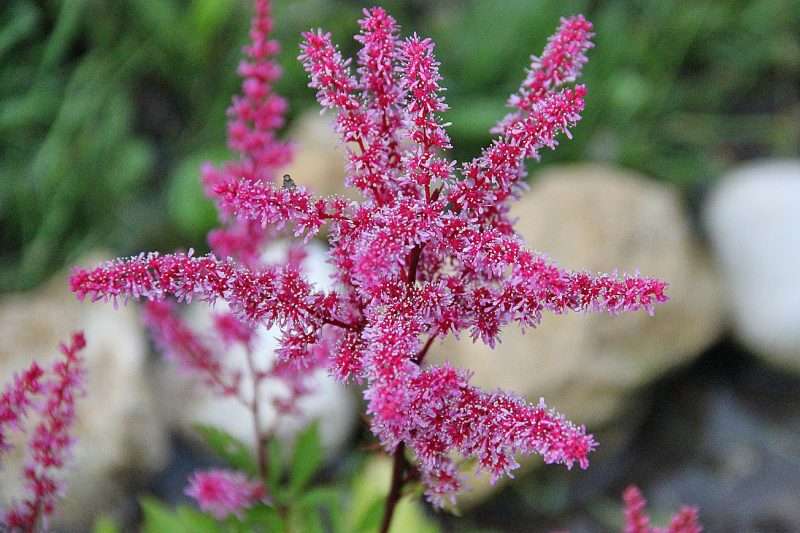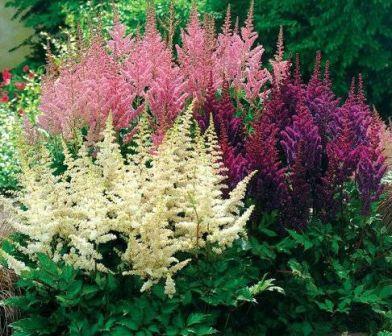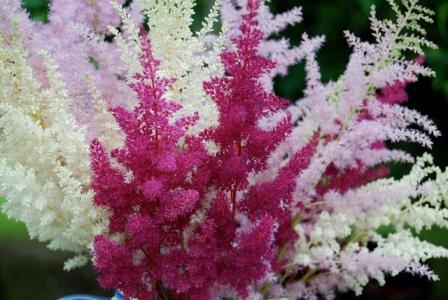 The original and lush astilba plant - planting and care in the open ground is not pretentious, grows luxuriously, adorns the garden wonderfully, we recommend that you always look at it. Such a wonderful perennial plant can decorate all the secluded corners of the garden and during its flowering, the palette of colors in your garden will just go through the roof. Especially astilba loves semi-illuminated areas, under the crown of trees, and feels very good there.
The original and lush astilba plant - planting and care in the open ground is not pretentious, grows luxuriously, adorns the garden wonderfully, we recommend that you always look at it. Such a wonderful perennial plant can decorate all the secluded corners of the garden and during its flowering, the palette of colors in your garden will just go through the roof. Especially astilba loves semi-illuminated areas, under the crown of trees, and feels very good there.
See also: phlox perennial - planting and care, photo.
Features
• Not a whimsical astilbe in the heat requires watering every day, or even twice - before sunrise and after sunset.
• The roots that grow upwards must be mulched constantly, covering from the scorching rays of the sun.
• New hybrids and varieties winter well and there is no need to dig them out for the winter.
• Transplant after 5-7 years, and astilba can delight you with its beautiful flowering for up to 20 years. This is such a wonderful flower.
The best varieties of astilbe
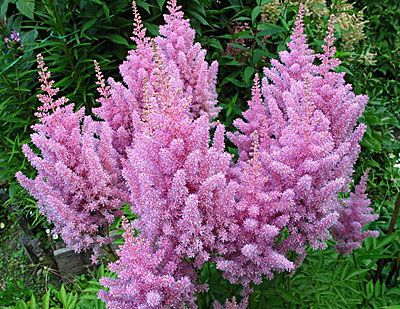
This flower is so breeders fall in love with its beauty and unpretentiousness that they bred about 200 varieties. All of them differ in color, size of brushes, size of flowers, flowering period and exactingness to watering.
Arends - against a green background of elongated leaves, tall lush inflorescences look so luxurious, and bushes can grow up to one and a half meters, forming an impossibly beautiful fragrant oasis among shady trees and tall bushes. At the same time, flowers can be of various colors from pale white to purple red, and if you plant different varieties, your garden will turn into a wonderful cloud of playing colors of delicate inflorescences in the form of balls or cones, or even individual arrows of delicate brushes.
“Boogie-woogie” with its lush pink foam of flowers is pleasing to the eye all June, “Liliputi” will decorate borders in July-August, and are also good for alpine hills. Gloria tolerates winter well and looks great in any water bodies.
Japanese astilba is especially good, which, after flowering, is also beautiful, dried flowers do not fall, do not lose their shape, and decorate the garden even in autumn.
See also: hydrangea garden - planting and care in the open ground.
Reproduction of astilbe
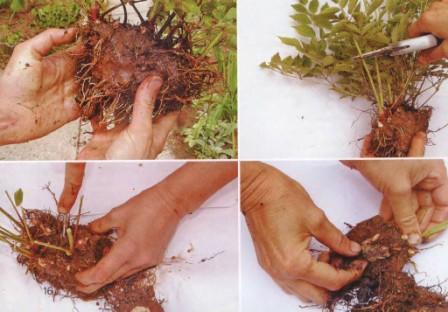
Here the sea for creativity - by seeds, dividing bushes, buds - as you want, you can propagate the beauty, which is especially appreciated by gardeners.
- By dividing the bush - scoop up the earth around the rhizome and pull it out gently with a lump of earth. Shake off the ground, and using a sharpened well knife, carefully cut the bush into parts with several buds on each, remove the dried parts, and plant separately, watering moderately every day.
- Kidneys - when the buds begin to swell in the spring - cut them off with a part of the rhizome, sprinkle the golden wounds, plant the processes in peat with drainage, cover with a film. How to grow stronger and go to growth - you can transfer to the garden.
- Seeds - at the end of flowering on astilbe seed boxes appear that give small seeds, and they can be planted in pots in early spring. You can harden, cover the soil over the seeds planted with snow, and then, when it melts, cover with a plastic wrap and place the refrigerator down for 2-3 weeks. There, the seeds will germinate, harden and calmly survive all subsequent winters, without bringing you any completely trouble.
Pulling them out of the refrigerator, place them in the light in moderate heat (up to 20 degrees), carefully water them, and as the real leaves appear, spread them in different pots.
How to plant astilbe
It's time to plant in late May, in extreme cases with a cold spring - in early June. Choose a suitable site in advance, it is better if it is under the crown of trees or on the shore of a reservoir. Astilba loves loam, with closely lying surface waters. Dig the soil, loosen it, fertilize it - add potassium, phosphorus, compost, mix with humus and your astilbe will like this mixture. Plant in pits to a depth of about 30 cm, and at the same distance from each other, shed well, mulch 3-4 cm.
Astilba Care
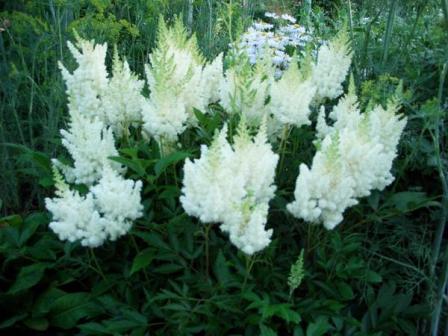
This activity is not difficult, you just need to water it sparingly, avoiding drying out, cover the roots with mulch, which grow upward and not deep, and remove dead parts in time. After 5-6 years - transplant to a new place.
In spring, fertilize in the form of nitrogen, in the summer - potash, in the fall - phosphorus. After top dressing, you need to loosen and mulch on a new one. You can also break off the remains of branches in spring and lay them in the form of mulch under the bushes, giving the plant additional organics and covering the roots from the sun.
Pests
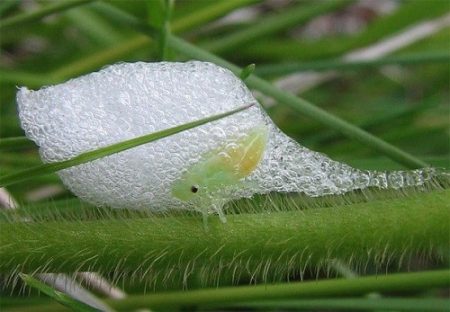
Although the plant is not whimsical, and pests do not bother him much, but there are still several dangers. This is a penny, and two types of nematodes. The first insect in the foam of saliva plants its larvae, which, developing, lead to wrinkling and yellowing of the leaves. It will help to destroy pennies air conditioning or karbofos.
Nematodes settle - one on the leaves with flowers, which leads to wrinkling and browning, the second - on the roots, forming growths in the form of cones. Remove infected parts, treat with phytoerm.
So taking care of the astilbe on the sly, separating and replanting new bushes, sowing new varieties with seeds, you can plant beautifully blooming oases on this site from this type of garden flowers, decorating the whole space around trees and shrubs, around house building, and decorating ponds with them. A wonderful perennial plant with not difficult care will serve you for many years, becoming more magnificent and more beautiful.
Look another - diseases of apple trees and their treatment photo.

